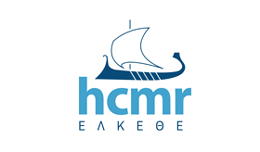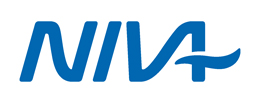Alkalinity, acidity and pH of the water column
Type of resources
Available actions
Topics
INSPIRE themes
Keywords
Contact for the resource
Provided by
Formats
Representation types
Scale
-

The data recorded by the oceanographic platforms operate in the Aegean and the Ionian Seas (fixed stations, ferry box system, gliders) are released through the POSEIDON portal. Physical and biochemical parameters of the marine environment as well as atmospheric parameters in the fixed station locations are available both in real time and delayed mode. The forecasting module of the POSEIDON system consists of four numerical models that provide in daily basis forecasts regarding the atmospheric, sea state, hydrodynamic and ecological conditions of the Eastern Mediterranean. The online POSEIDON database contains the data recorded by the insitu platforms offering also downloading functions for the whole data set, while a user-friendly tool is also available for accessing the results of all the forecasting models for the last five years.
-

The oceanographic data from the Oslofjord at 1 m and 60 m are in the range of a salinity of ~10-34 and a temperature range of -1 to 20 °C. Other sensor data that can be available are Chl-a fluorescence, turbidity, pH and pCO2. The station will give access to the above data for doing research on biogeochemistry and climate. NIVA staff will support via data QC and setup of remote data access.
-

Data access will be provided in near real time and in delayed mode. Parameters include salinity, temperature, chlorophyll fluorescence, turbidity, oxygen, pH, pCO2, wave height and direction, current speed and direction and also in air data on temperature, irradiation and air pressure. Also data from laboratory analyses of water samples are included, e.g. chlorophyll, salinity, CDOM, coloured dissolved organic matter, phytoplankton abundance and biodiversity. Data is distributed through the Baltic Operational Oceanographic System, BOOS and through the Swedish Oceanographic Data Centre at SMHI. Data is accessible through download and through web services. Data and metadata is delivered through SMHI systems for distributing oceanographic data, e.g. http://sharkdata.smhi.se according to EU standards and procedures.
-

COSYNA (Coastal Observation System for Northern and Arctic Seas) is an operational coastal monitoring, forecasting and information system for the North Sea composed by fixed platforms, FerryBoxes, gliders and HF-radar systems. It is being developed by institutes of the German Marine Research Consortium (KDM) and collaborating institutions and is operated by the HZG Research Centre. The infrastructure represents an investment of 9 M €. It was build up since 2007 and is fully operational since 2012. COSYNA_SFB is a Stationary FerryBox system, including self-cleaning features, installed in a container at the mouth of the Elbe River equipped with sensors T, C/S, turbidity, DO, pH, chlorophyll-afluorescence, CDOM fluorescence, nutrients (NOx, NO2, PO4, SiO2) and a cooled water sampler.
-

POSEIDON is an operational marine monitoring, forecasting and information system for the GreekSeas. The observing component is a distributed infrastructure made by three coastal buoys (Saronikos buoy-SB, Heraklion Coastal Buoy-HCB and Athos buoy-AB) and one Ferrybox (PFB). A calibration laboratory) is supporting the observing activities. The Ferrybox is installed on board H/S/F “Knossos Palace” and is equipped with sensors measuring T, C/S, DO, pH, fluorescence and turbidity. It is the only Ferry Box in the Mediterranean operating daily along the route Heraklion – Piraeus.
-

NorFerry is composed of three FerryBoxes that are operating in the North Sea, coastal Norway, and the Barents Sea opening. The Ferrybox installation provide the core sensor data from about 4 meters depth of temperature, salinity, Chl-a fluorescence, oxygen and turbidity. Some ships will also provide data on parameters, ocean colour and true wind. Special sampling can be ordered.
-

The Research Station at Solbergstrand performs large-scale experiments in marine ecology, sediment research, biogeochemistry, aquaculture and test technology for treating ballast water. The station has fiberglass and concrete seawater pools with volumes ranging from 20 to 550 m³. A number of smaller testing facilities on land and the seabed outside the station have been built to manipulate and control marine ecosystems. The station has 10 laboratories for experimentation and analysis activities, among them an authorized infection lab for fish and a special lab for working with radioactive tracers. Facilities at Solbergstrand covers e.g. hard-bottom and soft-bottom mesocosoms, brackish water systems, seaweed and kelp communities, pelagic communities from the upper water depths and continuous water supply from surface and 60 meter with measurements on temperature and salinity.For surface water additional sensor for Chl-a fluorescence are installed and for 60 m pH and pCO2. Other sensor combinations are available for experiments on request.
-

Immingham-Frederikstad, Frederikstad-Halden, Halden-Zeebrugge, Zeebrugge-Immingham
-

Buesum-Helgoland-Buesum
-

POSEIDON is an operational marine monitoring, forecasting and information system for the Greek Seas. The observing component is a distributed infrastructure made by three coastal buoys (Saronikos buoy-SB, Heraklion Coastal Buoy-HCB and Athos buoy-AB) and one Ferrybox (PFB). A calibration laboratory) is supporting the observing activities. The Ferrybox is installed on board H/S/F “Knossos Palace” and is equipped with sensors measuring T, C/S, DO, pH, fluorescence and turbidity. It is the only Ferry Box in the Mediterranean operating daily along the route Heraklion – Piraeus.
 Metadata catalogue
Metadata catalogue